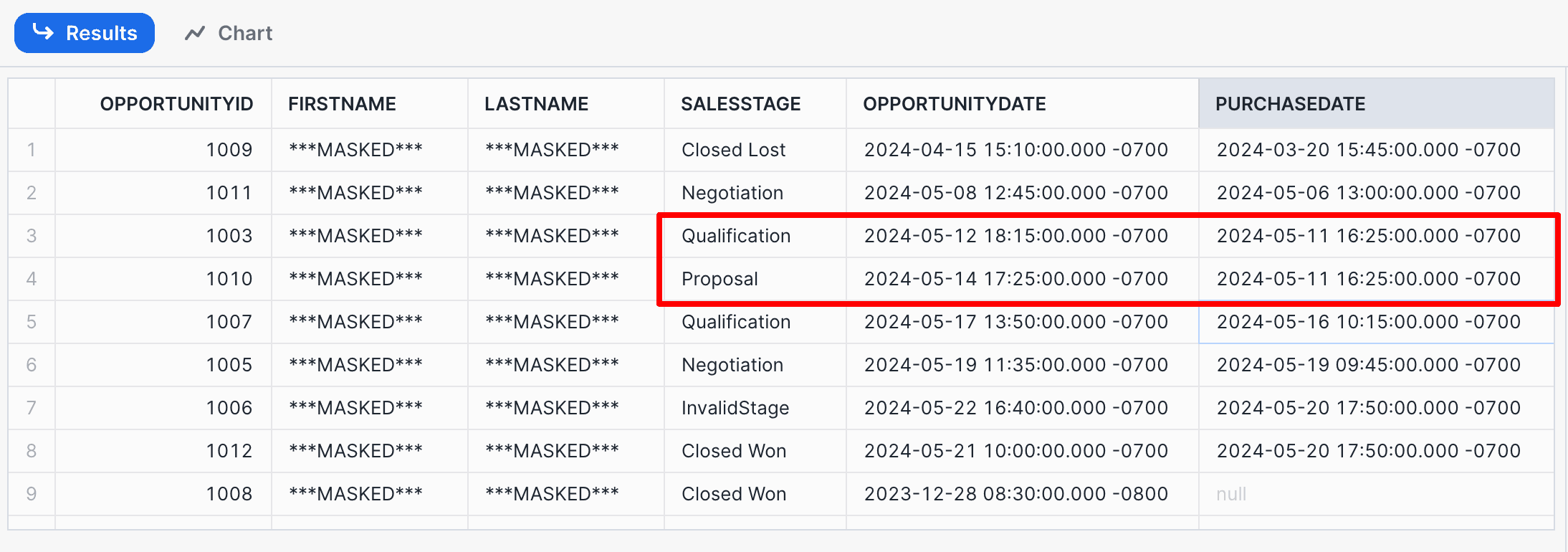Advanced Data Warehousing
May 24, 2024
Snowflake ASOF JOIN
Analyzing time-series data often involves understanding the relationship between events that occur at different points in time. In the context of sales, this could mean understanding how a customer's engagement with your company (represented in the Opportunities table) relates to their actual purchase behavior (captured in the Buyer table). However, the timestamps of these events rarely align perfectly.
The Power of ASOF JOIN
Snowflake's ASOF JOIN is a powerful tool designed for just this kind of scenario. Instead of requiring exact matches on timestamps, it intelligently matches each row in one table (the "left" table) with the row in another table (the "right" table) that has the most recent timestamp less than or equal to the timestamp in the left table.
A Practical Example: Sales Data Analysis
Let's explore how to use Snowflake Data Classification in a practical scenario.
⛁ Sample Data Model: salesdb-data-model
Setup the SalesDB sample data model and proceed with the rest of the exercises. This model provides a robust foundation for tracking customers, buyers, clients, and sales opportunities.
>_ SQL
Let's delve into how Snowflake feature can supercharge your data workflow:
Analyzing Customer Opportunities and Purchases
Let's consider your SalesDB.custs schema, which contains the following tables:
Customer: Stores information about your potential and existing customers.
Opportunities: Tracks sales opportunities at various stages.
Buyer: Contains data about customers who have made purchases.
We want to analyze how opportunities progress relative to when a customer becomes a buyer. Given that the LoadDate fields in our tables represent the time when data is loaded, not necessarily the exact time of customer creation or opportunity progression, ASOF JOIN is ideal.
The ASOF JOIN Query
Here's the query we'll use to achieve this alignment:
>_ SQL

Explanation:
JOIN: The initial JOIN connects Customer and Opportunities based on CustomerID, giving us a combined view of customers and their associated opportunities.
ASOF JOIN: The ASOF JOIN associates each opportunity (o) with the buyer (b) record whose LoadDate is the closest match before or at the opportunity's LoadDate. The MATCH_CONDITION ensures this comparison is done correctly.
Output: The result will display each opportunity alongside the nearest (in time) purchase event for that customer, creating a timeline of customer engagement and purchasing behavior.
Interpreting the Results
By analyzing the output of this query, you can gain valuable insights into:
Conversion Rates: See how many opportunities lead to actual purchases and at which stage of the sales process the purchase typically occurs.
Customer Journey: Track how customers progress through the sales funnel over time, from initial contact to becoming a buyer.
Lead Time Analysis: Measure the average time between an opportunity's creation and the corresponding purchase, helping you optimize your sales cycle.
Beyond the Basics
You can enhance this analysis by:
Adding Filters: Filter the results based on specific time periods, lead sources, or sales stages.
Aggregations: Calculate aggregate statistics like average deal size or total revenue for different customer segments.
Combining with Other Data: Join additional tables, such as marketing campaign data, to analyze how marketing efforts impact customer behavior.
Conclusion
The ASOF JOIN is a powerful tool for analyzing time-series data in Snowflake. By intelligently aligning events from different tables, you can uncover hidden patterns, understand customer journeys, and make data-driven decisions to optimize your sales strategies.
Resources
ASOF Join: https://docs.snowflake.com/en/sql-reference/constructs/asof-join










